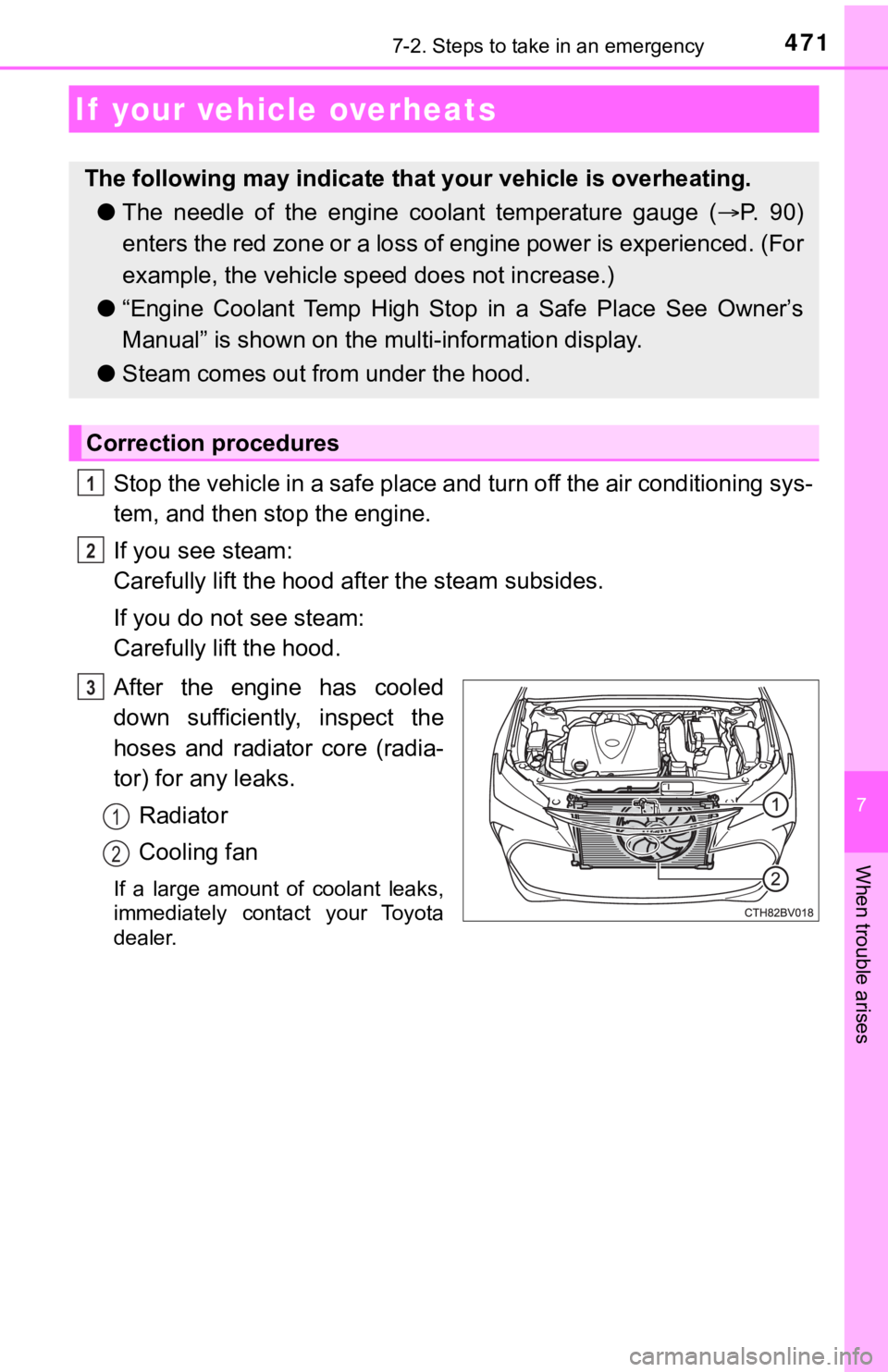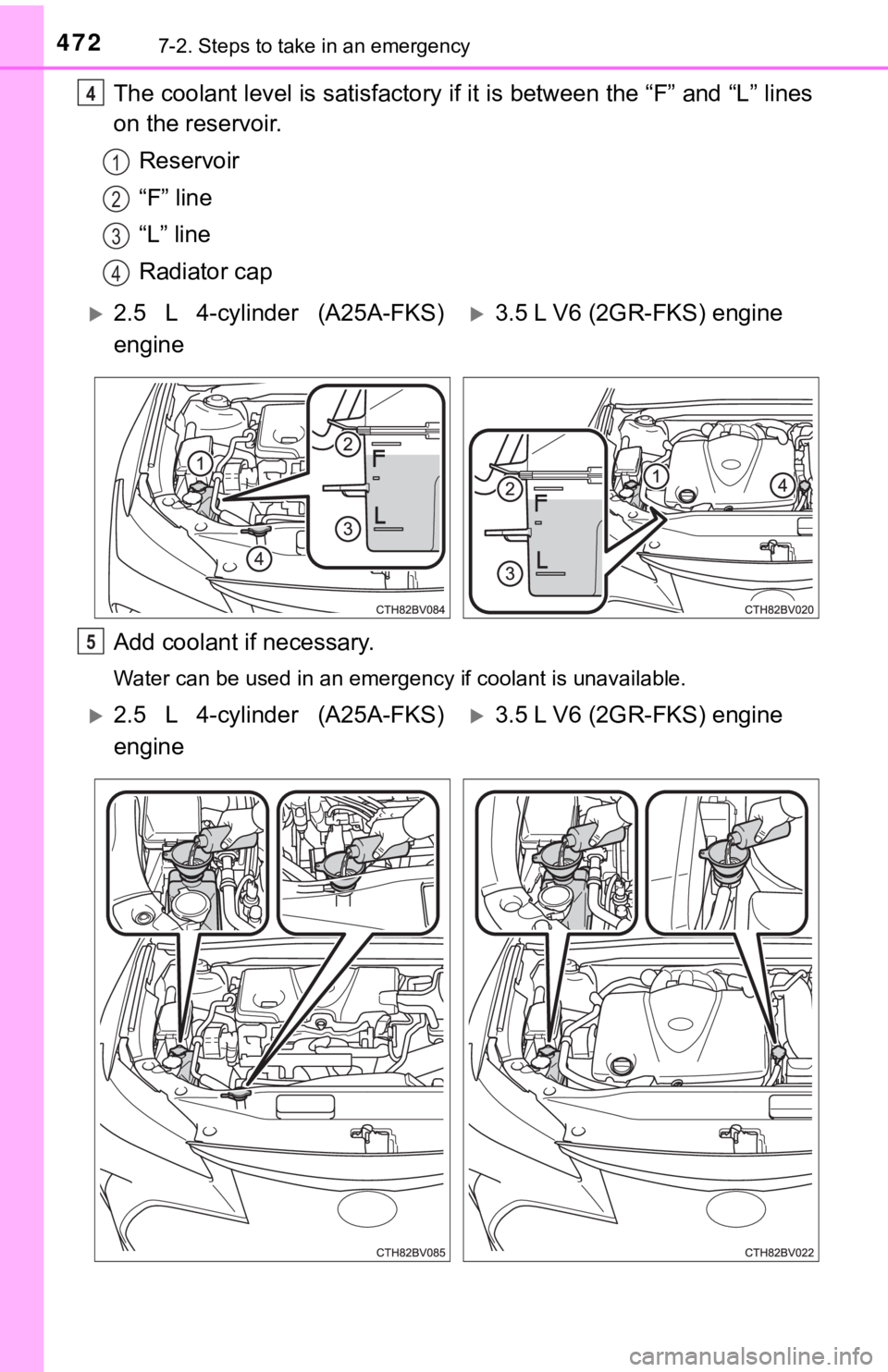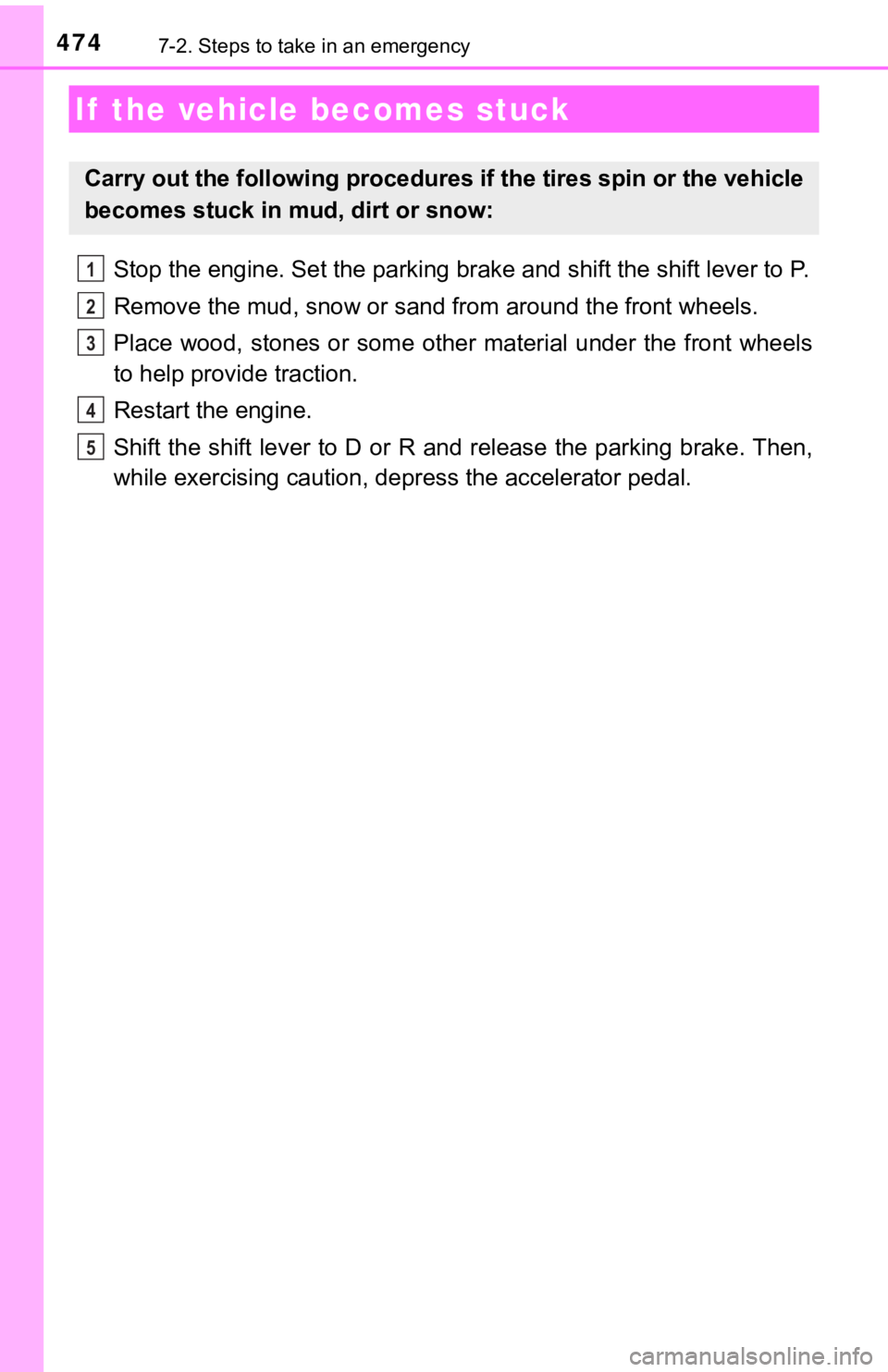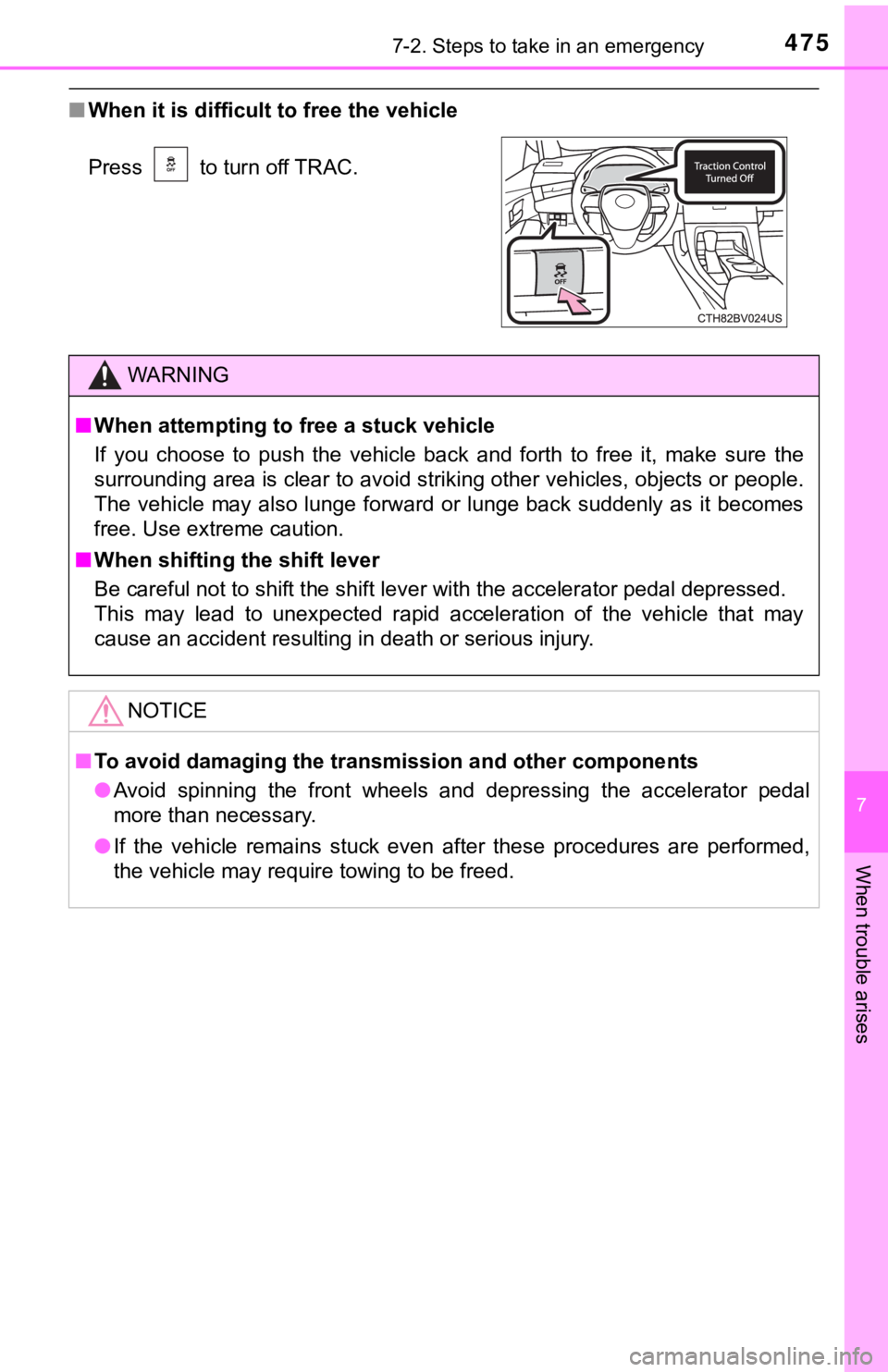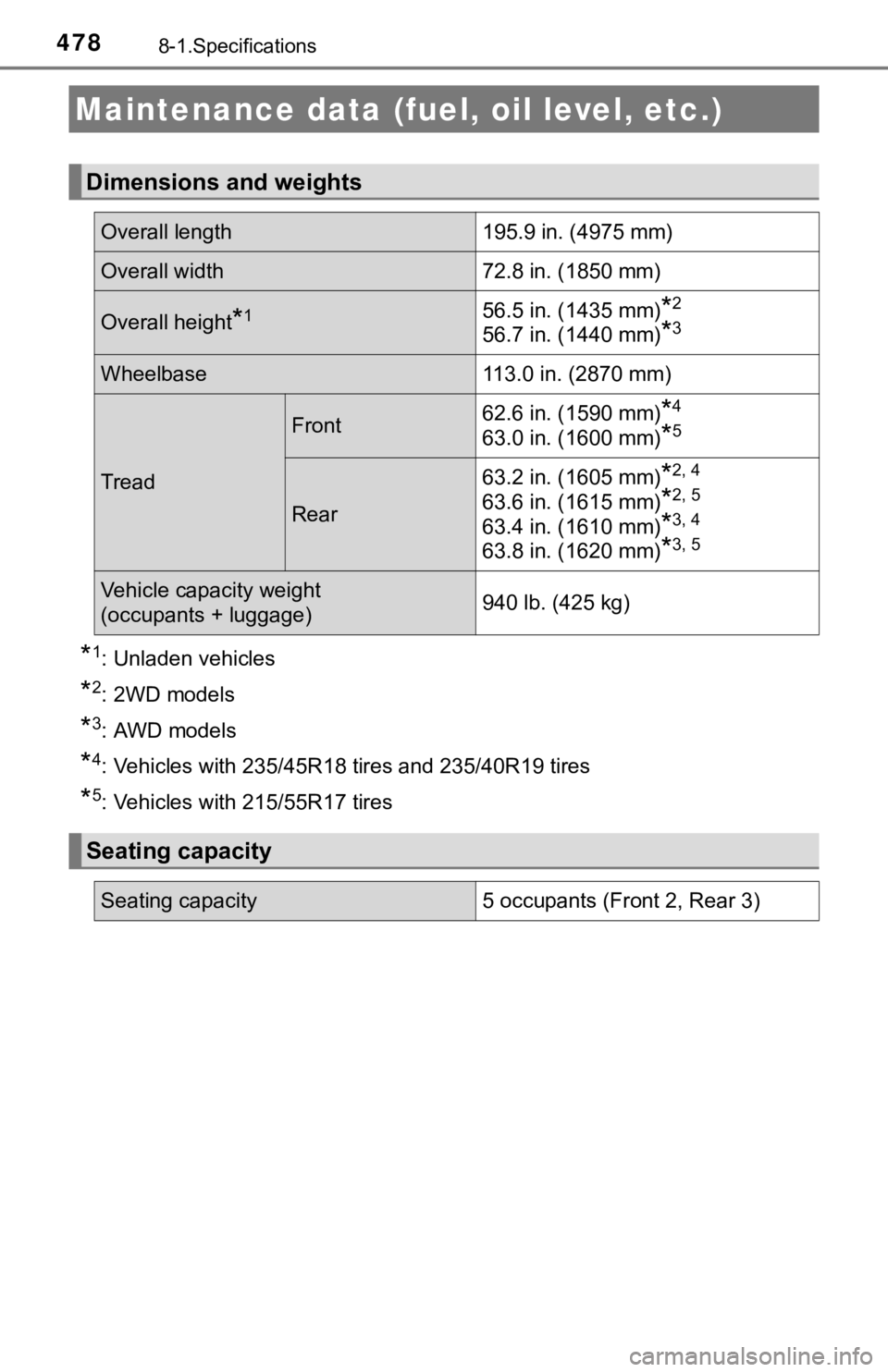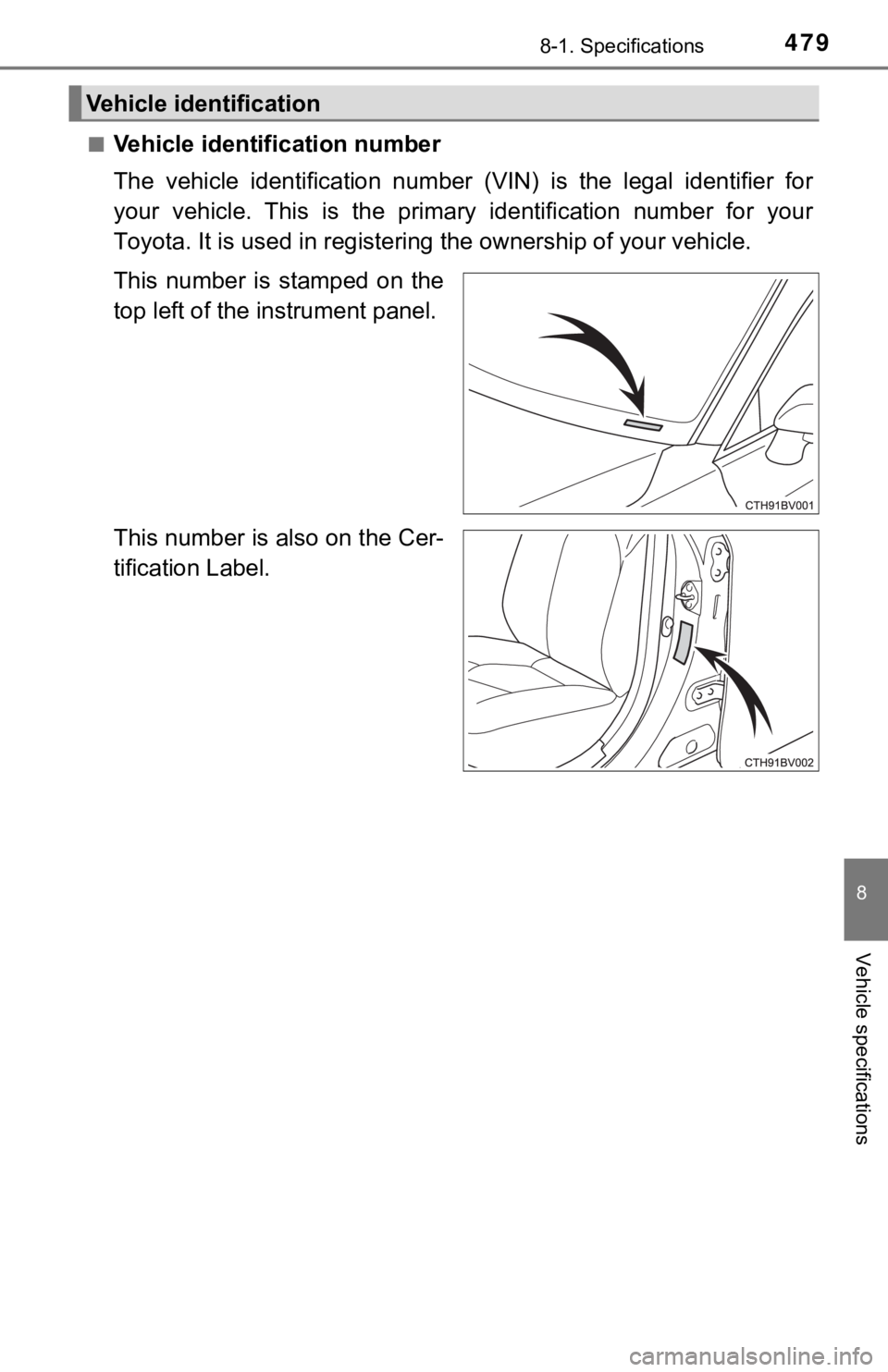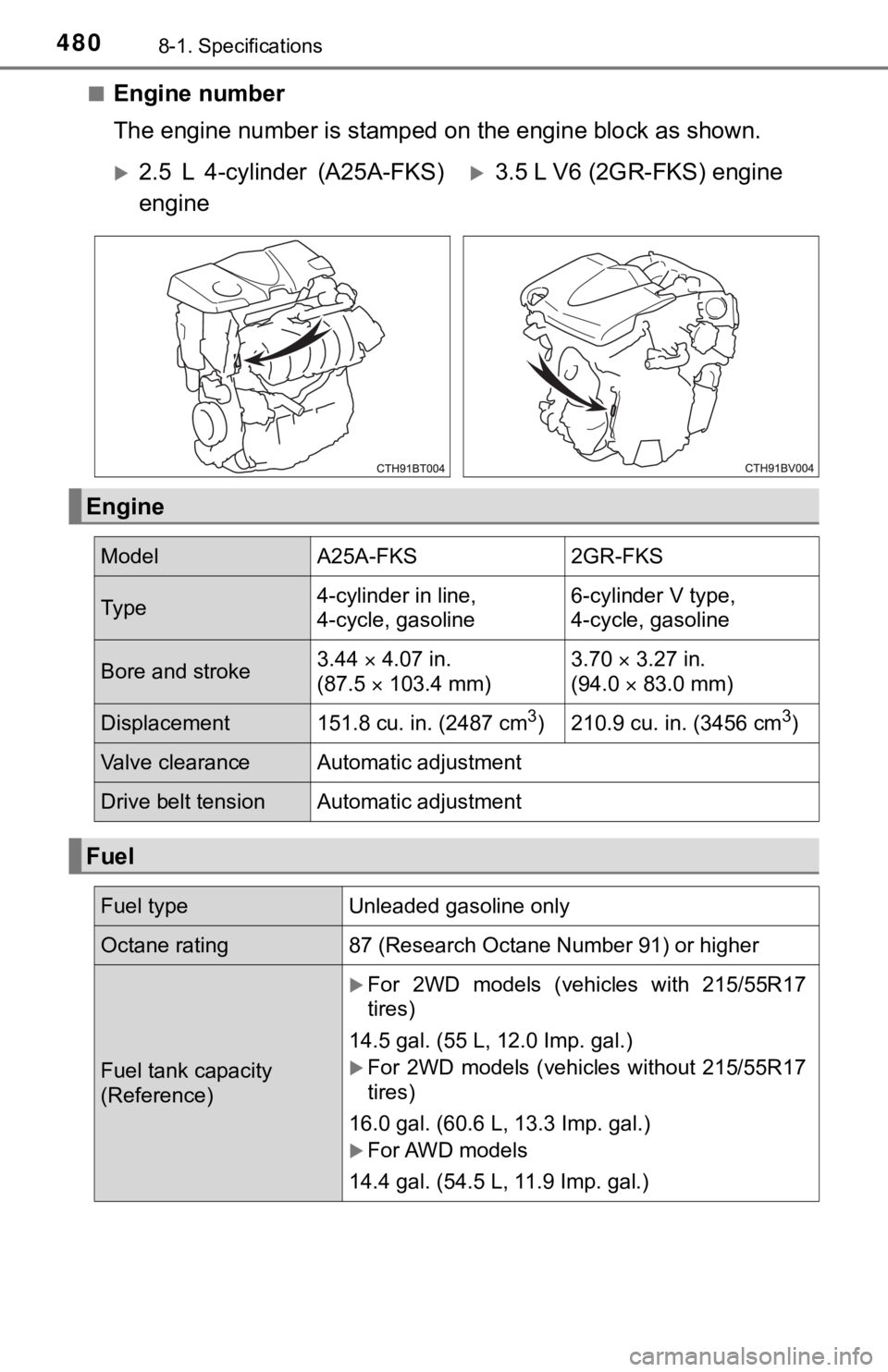TOYOTA AVALON 2021 Owners Manual (in English)
AVALON 2021
TOYOTA
TOYOTA
https://www.carmanualsonline.info/img/14/42383/w960_42383-0.png
TOYOTA AVALON 2021 Owners Manual (in English)
Trending: instrument panel, torque, roof rack, brake pads, parking brake, instrument cluster, height adjustment
Page 471 of 548
4717-2. Steps to take in an emergency
7
When trouble arises
Stop the vehicle in a safe place and turn off the air conditioning sys-
tem, and then stop the engine.
If you see steam:
Carefully lift the hood after the steam subsides.
If you do not see steam:
Carefully lift the hood.
After the engine has cooled
down sufficiently, inspect the
hoses and radiator core (radia-
tor) for any leaks.
Radiator
Cooling fan
If a large amount of coolant leaks,
immediately contact your Toyota
dealer.
If your vehicle overheats
The following may indicate that your vehicle is overheating.
●The needle of the engine coolant temperature gauge (P. 90)
enters the red zone or a loss of engine power is experienced. (For
example, the vehicle speed does not increase.)
●“Engine Coolant Temp High Stop in a Safe Place See Owner’s
Manual” is shown on the multi-information display.
●Steam comes out from under the hood.
Correction procedures
1
2
3
1
2
Page 472 of 548
4727-2. Steps to take in an emergency
The coolant level is satisfactory if it is between the “F” and “L” lines
on the reservoir.
Reservoir
“F” line
“L” line
Radiator cap
Add coolant if necessary.
Water can be used in an emergency if coolant is unavailable.
4
1
2
3
4
2.5 L 4-cylinder (A25A-FKS)
engine3.5 L V6 (2GR-FKS) engine
5
2.5 L 4-cylinder (A25A-FKS)
engine3.5 L V6 (2GR-FKS) engine
Page 473 of 548
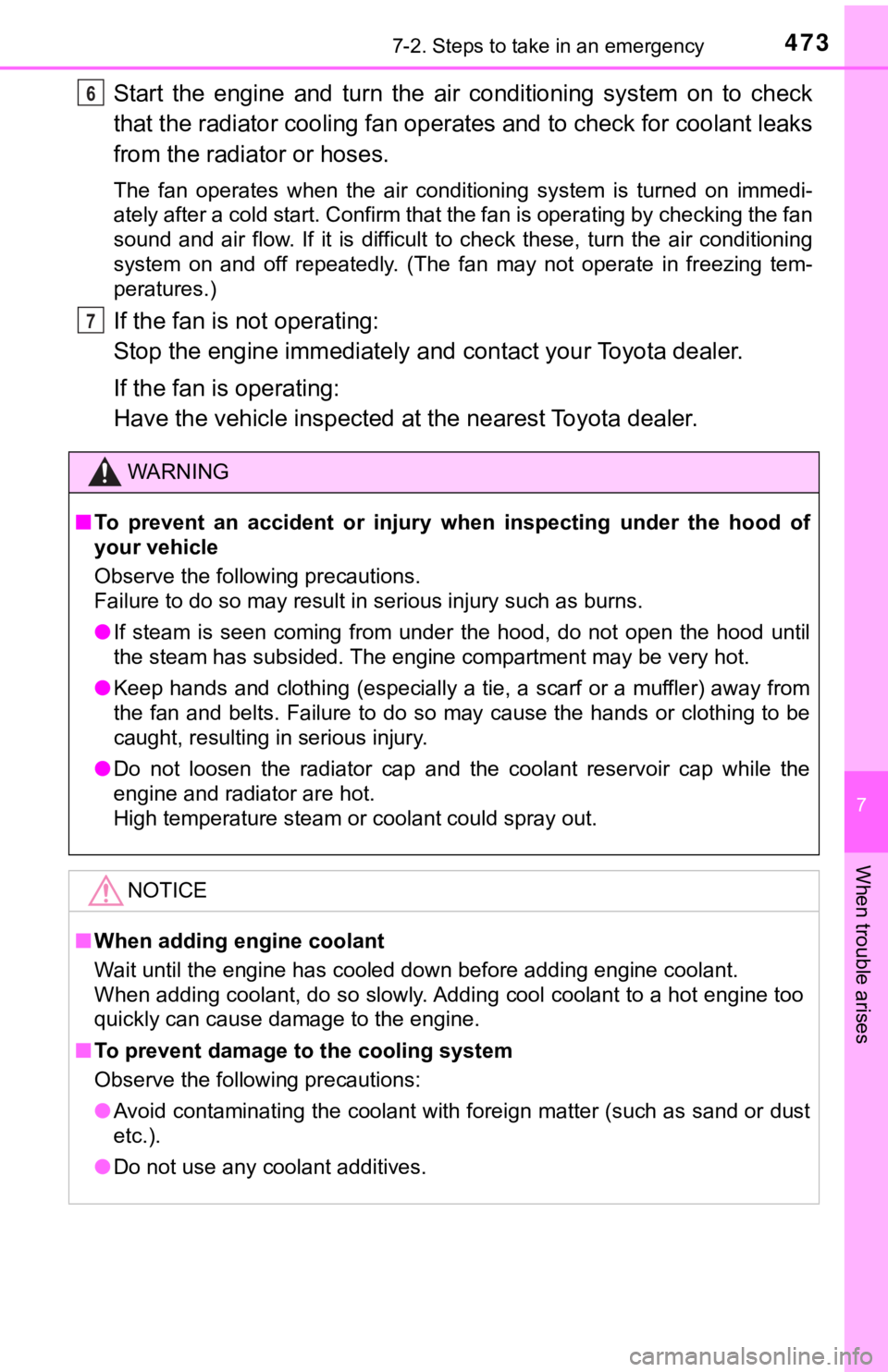
4737-2. Steps to take in an emergency
7
When trouble arises
Start the engine and turn the air conditioning system on to check
that the radiator cooling fan operates and to check for coolant leaks
from the radiator or hoses.
The fan operates when the air conditioning system is turned on immedi-
ately after a cold start. Confirm that the fan is operating by checking the fan
sound and air flow. If it is difficult to check these, turn the air conditioning
system on and off repeatedly. (The fan may not operate in freezing tem-
peratures.)
If the fan is not operating:
Stop the engine immediately and contact your Toyota dealer.
If the fan is operating:
Have the vehicle inspected at the nearest Toyota dealer.
WARNING
■To prevent an accident or injury when inspecting under the hood of
your vehicle
Observe the following precautions.
<00290044004c004f005800550048000300570052000300470052000300560052000300500044005c00030055004800560058004f00570003004c00510003005600480055004c0052005800560003004c0051004d00580055005c0003005600580046004b00
03004400560003004500580055005100560011[
●If steam is seen coming from under the hood, do not open the hood until
the steam has subsided. The engine compartment may be very hot.
●Keep hands and clothing (especially a tie, a scarf or a muffler) away from
the fan and belts. Failure to do so may cause the hands or clothing to be
caught, resulting in serious injury.
●Do not loosen the radiator cap and the coolant reservoir cap while the
engine and radiator are hot.
High temperature steam or coolant could spray out.
NOTICE
■When adding engine coolant
Wait until the engine has cooled down before adding engine coolant.
When adding coolant, do so slowly. Adding cool coolant to a hot engine too
quickly can cause damage to the engine.
■To prevent damage to the cooling system
Observe the following precautions:
●Avoid contaminating the coolant with foreign matter (such as sand or dust
etc.).
●Do not use any coolant additives.
6
7
Page 474 of 548
4747-2. Steps to take in an emergency
Stop the engine. Set the parking brake and shift the shift lever to P.
Remove the mud, snow or sand from around the front wheels.
Place wood, stones or some other material under the front wheels
to help provide traction.
Restart the engine.
Shift the shift lever to D or R and release the parking brake. Then,
while exercising caution, depress the accelerator pedal.
If the vehicle becomes stuck
Carry out the following procedures if the tires spin or the vehicle
becomes stuck in mud, dirt or snow:
1
2
3
4
5
Page 475 of 548
4757-2. Steps to take in an emergency
7
When trouble arises
■When it is difficult to free the vehicle
Press to turn off TRAC.
WARNING
■When attempting to free a stuck vehicle
If you choose to push the vehicle back and forth to free it, make sure the
surrounding area is clear to avoid striking other vehicles, objects or people.
The vehicle may also lunge forward or lunge back suddenly as it becomes
free. Use extreme caution.
■When shifting the shift lever
Be careful not to shift the shift lever with the accelerator pedal depressed.
This may lead to unexpected rapid acceleration of the vehicle that may
cause an accident resulting in death or serious injury.
NOTICE
■To avoid damaging the transmission and other components
●Avoid spinning the front wheels and depressing the accelerator pedal
more than necessary.
●If the vehicle remains stuck even after these procedures are performed,
the vehicle may require towing to be freed.
Page 476 of 548
4767-2. Steps to take in an emergency
Page 477 of 548
477
8Vehicle specifications
8-1. Specifications
Maintenance data
(fuel, oil level, etc.) .......... 478
Fuel information ................ 489
Tire information ................. 492
8-2. Customization
Customizable features ...... 505
8-3. Items to initialize
Items to initialize ............... 513
Page 478 of 548
4788-1.Specifications
*1: Unladen vehicles
*2: 2WD models
*3: AWD models
*4: Vehicles with 235/45R18 tires and 235/40R19 tires
*5: Vehicles with 215/55R17 tires
Maintenance data (fuel, oil level, etc.)
Dimensions and weights
Overall length 195.9 in. (4975 mm)
Overall width 72.8 in. (1850 mm)
Overall height*156.5 in. (1435 mm)*2
56.7 in. (1440 mm)*3
Wheelbase 113.0 in. (2870 mm)
Tread
Front62.6 in. (1590 mm)*4
63.0 in. (1600 mm)*5
Rear63.2 in. (1605 mm)
*2, 4
63.6 in. (1615 mm)*2, 5
63.4 in. (1610 mm)*3, 4
63.8 in. (1620 mm)*3, 5
Vehicle capacity weight
(occupants + luggage)940 lb. (425 kg)
Seating capacity
Seating capacity 5 occupants (Front 2, Rear 3)
Page 479 of 548
4798-1. Specifications
8
Vehicle specifications
■Vehicle identification number
The vehicle identification number (VIN) is the legal identifier for
your vehicle. This is the primary identification number for your
Toyota. It is used in registering the ownership of your vehicle.
This number is stamped on the
top left of the instrument panel.
This number is also on the Cer-
tification Label.
Vehicle identification
Page 480 of 548
4808-1. Specifications
■Engine number
The engine number is stamped on the engine block as shown.
2.5 L 4-cylinder (A25A-FKS)
engine3.5 L V6 (2GR-FKS) engine
Engine
Model A25A-FKS 2GR-FKS
Ty p e4-cylinder in line,
4-cycle, gasoline6-cylinder V type,
4-cycle, gasoline
Bore and stroke3.44 4.07 in.
(87.5 103.4 mm)3.70 3.27 in.
(94.0 83.0 mm)
Displacement 151.8 cu. in. (2487 cm3) 210.9 cu. in. (3456 cm3)
Valve clearance Automatic adjustment
Drive belt tension Automatic adjustment
Fuel
Fuel type Unleaded gasoline only
Octane rating 87 (Research Octane Number 91) or higher
Fuel tank capacity
(Reference)
For 2WD models (vehicles with 215/55R17
tires)
14.5 gal. (55 L, 12.0 Imp. gal.)
For 2WD models (vehicles without 215/55R17
tires)
16.0 gal. (60.6 L, 13.3 Imp. gal.)
For AWD models
14.4 gal. (54.5 L, 11.9 Imp. gal.)
Trending: rear view mirror, dimensions, heating, fold seats, odometer, instrument panel, hood open
